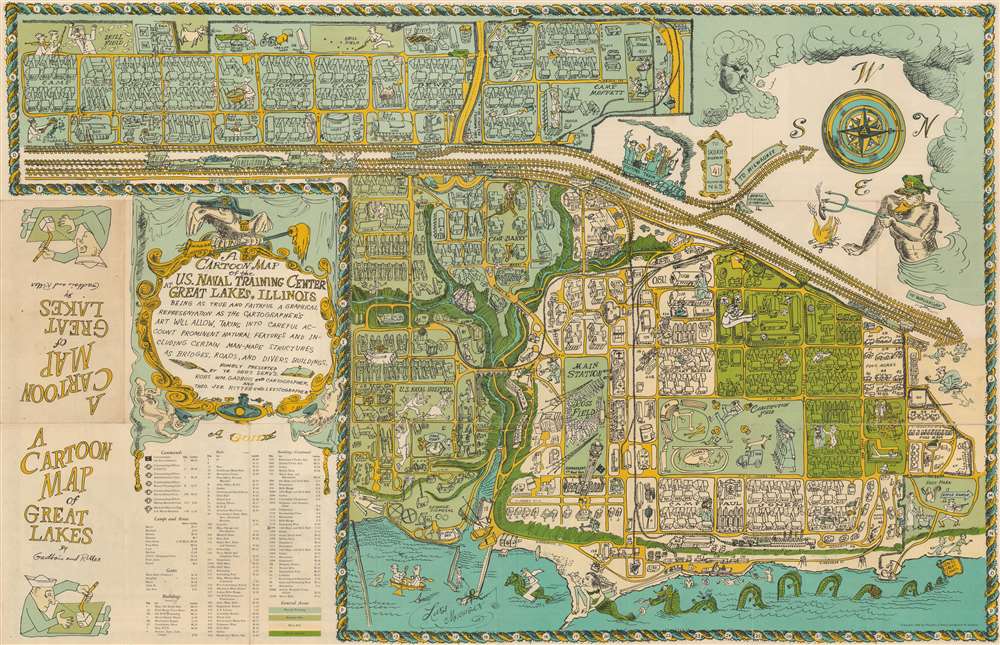1949 Gadbois and Ritter Cartoon Pictorial Map of the U.S.N.T.C. Great Lakes
USNTCGreatLakes-gadboisritter-1949
Title
1949 (dated) 22 x 34 in (55.88 x 86.36 cm)
Description
U.S. Naval Training Center Great Lakes
Naval Station Great Lakes was founded in 1905 and construction began that year. The base opened its gates on July 1, 1911. Great lakes was then a fairly modest installation, occupying only 165 acres. By the end of World War I, in 1918, the base had grown to 1,200 acres and over 125,000 sailors had passed through on their way to fight. After the war ended, the training of recruits slowed to a crawl, and even halted for a while. The only major operations going on at the base were the air base and the Radio School. By 1940, however, with threats from both oceans, increased enlistments in the Navy were finally approved by Congress. Within ten months of the attack on Pearl Harbor, the base had grown to nearly 1,600 acres. By the end of World War II, four million men were in uniform in the U.S. Navy, and over one million of them had passed through Great Lakes. Within ten months of the attack on Pearl Harbor, the base had grown from 172 acres to nearly 1,600 with seventeen separate camps in operation. By mid-1943, over 700 instructors were working at the base. Great Lakes was also the first naval installation to train African-American troops, although the base wouldn't be integrated until mid-1945. Today, Great Lakes is the largest training facility for the U.S Navy and even houses the elite Naval Special Warfare Preparatory School, where sailors hoping to become Navy SEALs are sent to train.Publication History and Census
This map was created by Robert William Gadbois and Theodore J. Ritter and published in 1949. It is quite rare, as we have been able to trace only two examples in institutional collections at the Library of Congress and Stanford University. We have been able to locate only three instances of this piece entering the private market in the last ten years.CartographerS
Robert William Gadbois (fl. c. 1940 - 1960) was an artist active in the United States and Canada during the mid-20th century. After receiving his M.F.A. from the University of Iowa in 1950, Gadbois began teaching art at the University of Winnipeg along with three other new hires from Iowa. Gadbois and his contemporaries reenergized the art program in Winnipeg and drove a new interest in modern and surrealist art. More by this mapmaker...
Theodore J. Ritter (fl. c. 1940 - 1950) was a writer active in the United States during the mid-20th century. Ritter wrote several books about life in the navy centered around a character named Elmore which he produced with Robert William Gadbois. Learn More...

